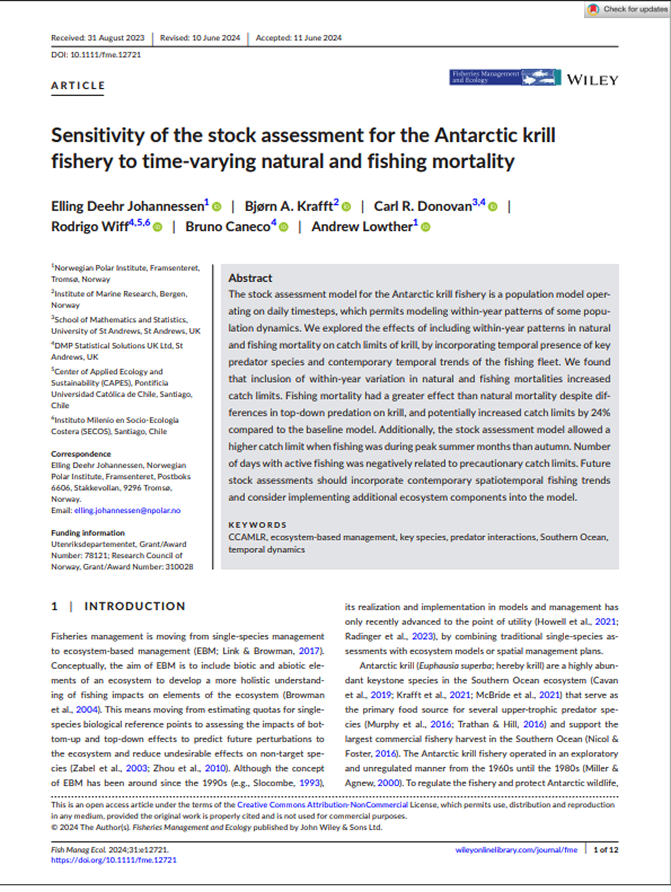Biomass
Fisheries management
Antarctic ecosystem
Krill (Euphausia superba)
Intra-season variations in distribution and abundance of humpback whales in the West Antarctic Peninsula using cruise vessels as opportunistic platforms
Summary
This study used tourist cruise ships as research platforms to track humpback whale numbers and locations in the Western Antarctic Peninsula during the 2019/2020 summer season. The findings show whale numbers increased rapidly through December, then leveled off by mid-January, with the whales moving from the northern Gerlache Strait to concentrate in the central Gerlache and southern Bransfield Straits. Researchers estimated peak whale numbers at 19,107 individuals (an increase from about 7,000 in 2000), with projected krill consumption between 1.4-3.7 million tons. The study found little overlap in time and space between whales and commercial krill fishing during November-January, though interactions could occur later in the feeding season.

1
This figure shows the timing of humpback whale presence versus krill fishing activity in the Western Antarctic Peninsula. The data reveals clear temporal separation between whale and fishery activities. Humpback whales are most abundant December through March, with peak consumption in January-February. Krill fishing occurs primarily April through July. The minimal overlap during the study period (November-January) confirms limited direct competition for krill resources in early summer, though potential interactions could occur later when both activities may coincide. Key Findings
1
Humpback whale populations have recovered dramatically since 2000 (from ~7,000 to 19,107 individuals)2
Whales consume an estimated 1.4-3.7 million tons of krill during their feeding season3
Whale numbers increase rapidly through December, then stabilize by mid-January4
Whales shift their distribution from northern Gerlache Strait to central Gerlache and southern Bransfield Straits during the season 5
Minimal overlap between whale feeding areas and commercial krill fishing during early summer (November-January) Illustration 

